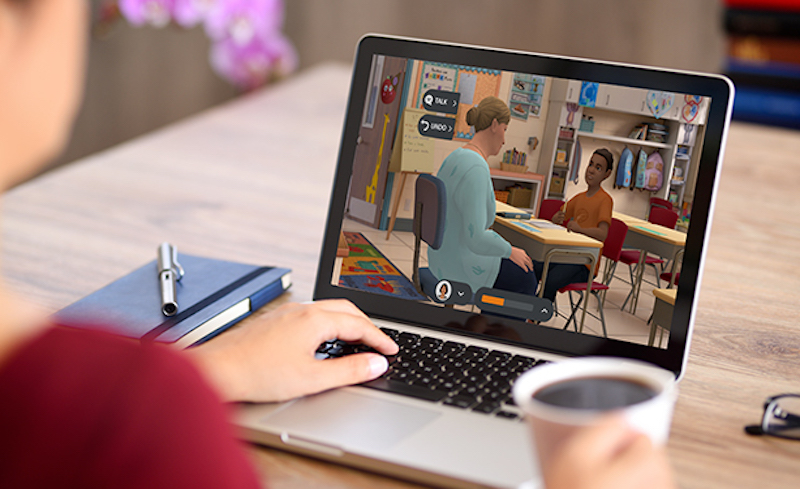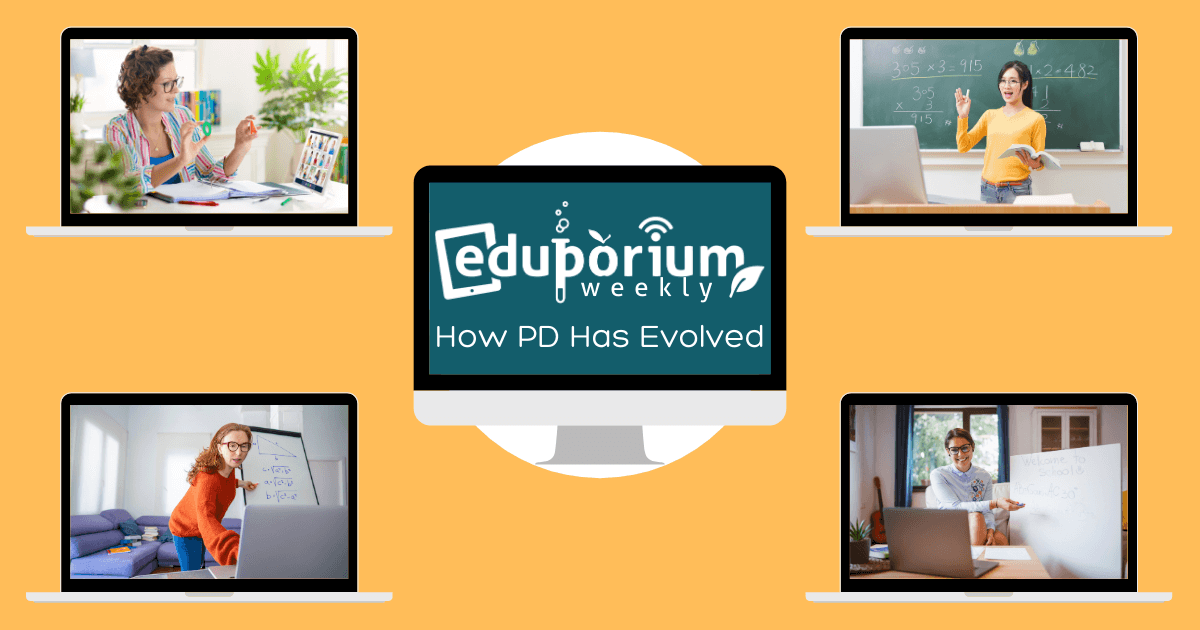For educators, the last year of instruction has been extremely tough physically and mentally. Not only was everything upended, they've had to learn new instructional techniques, deal with not seeing students, and try to jam everything in to short class meetings. That's not all they're dealing with, however. On top of these challenges, many administrators are still requiring or suggesting various remote professional development opportunities for teachers. Stuffing them into an already overloaded scheduled isn't exactly high on their list of desires. Plus, with many restrictions still in place, PD as we knew it has changed a great deal as well.
Supporting Educators in Remote Learning
Of course, many educators have needed all the help and support they can get throughout this time. The thing to remember, however, is that they also certainly need balance. While professional learning can be valuable for them, it can also contribute to burning them out. Sometimes, just the thought of adding one more thing to their to-do lists is enough to add unneeded stress to their lives. The main problem is that, as educators around the world successfully use new tools in remote learning, administrators may want their teachers to try them. This, of course, means professional development sessions that take up time. When administering remote professional development, it should at least be strategic.
What should remote PD look like?
While educators need guidance in remote learning, professional development needs to be quick, concise, and take place only when necessary. It's also ideal when PD sessions are interactive and allow educators to immediately apply what they learn. If possible, the sessions or lessons should be available for teachers to access in any format, at any time, and from anywhere. If they're able to complete them asynchronously, that would make things much more convenient. Besides that, remote professional development simply needs to be relevant. Only make and share updates with educators when necessary. Training should also be versatile so facilitators can adapt it as often as needed.
Content to include in remote professional development.
Much of remote PD will involve learning to use new technology. For educators to get the most out of it, structured, concise, and easy-to-follow training is definitely best. Demonstrations are great and accessible video resources can also be helpful. Showing teachers how to effectively communicate with remote students is also key. Along those lines, helping them focus on finding and using relevant digital resources is more helpful than simply throwing a bunch of different tools at them. Finally, administrators might want to consider tying social-emotional health into the equation. It's vital that teachers not only work to help students remain balanced, but keep their own in check as well. This means discovering online SEL resources or simply knowing how much PD is too much.

Key Elements of Today's PD
Like student learning experiences, educator learning experiences have greatly evolved in the last year. Similarly, they might not return to what they once were even after pandemic-era learning winds down. Many teachers are burned out and find themselves in a suboptimal place mentally. For these reasons (and others), facilitators should design remote professional development experiences with these factors in mind. One strategy education leaders can take is to make the experiences more community-centered. Letting teachers know they're safe to voice opinions and supported no matter what is a good place to start. Even with digital tools and learning environments, intentionally highlighting community can be effective.
Creating a sense of community.
Another helpful approach is to build collaborative experiences for educators. It typically takes longer to plan these types of events, but being able to connect with others is something all people crave. In some cases, in-person strategies can simply be modified to allow them to work in remote PD. It's possible to do it asynchronously as well. In the same way students read articles or watch videos on their own in flipped remote learning, educators could do the same and then participate in a chat or group discussion to share their thoughts and what they've learned. As long as the educators buy in, this could have some potential.
Customizing remote PD.
Personalized PD experiences can also help teachers maintain focus and get out of it what they need. It's not surprising that even educators in the same school or district have had different personal needs throughout the pandemic. Surveying educators in the days before the session allows for relevant topics to be included. Then, at various points during the session, participants can essentially choose what content they want to consume. They can also utilize breakout rooms for educators with the same questions or needs. Teachers can separate based on those needs and lead their own professional learning to maximize what they get out of it.
Personalizing PD for more appeal.
Whether we like it or not, professional development is still a part of remote teaching. We can certainly understand, however, why educators might be turned off by this prospect. Of course, their plates are already full and they're still navigating uncertainties. In order to help both them and their students, remote professional development sessions have been administered with various frequency. Instead of dedicating a whole day or large chunks of time to PD, however, taking a page out of remote student engagement has led many administrators to lean more on micro PD. This helps save time, allows teachers to get the info they need, and could cut down on anxieties as well.
Benefits of personalizing professional development.
When it comes to micro PD, these options are typically much shorter and offer a lot more personalization for teachers. Believe it or not, with remote PD, teachers can actually enjoy greater flexibility. As long as it's fully accessible from home, they could theoretically complete their sessions on their own time. Either administrators or the teachers themselves can create the element of personalization that makes PD more appealing. It might also be easier than you think to personalize it based on individual teacher goals and needs. Plus, it's easier on school and teacher budgets when PD takes place at home.
Different options for personalized remote PD.
In order to offer individual PD options, administrators can turn to different types of media. Broadcasts, like webinars and podcasts, are a great option. While webinars are typically streamed live, they're also almost always recorded, allowing teachers to go back and watch them when it's convenient. The same kind of situation applies to podcasts. With podcasts, however, teachers could even be doing other things while listening. Finally, educators can help their administrators create the most meaningful personalized PD experiences simply by being upfront. Sharing instructional goals, pain points, areas in which improvement is needed, and personal preferences can help in the PD design process.

Tips for Remote PD Success
In remote professional development, not every attempt will be a home run. That's why it's important for educators and school leaders to figure out what works and what doesn't. While it does take a lot of planning to put on remote PD sessions or curate the content for educators to consume, there's nothing wrong with phasing something out if it's not working. Continuing with something that's not effective isn't doing anybody any favors. One of the big things for administrators is staying informed with the latest findings when it comes to teacher development. What is it that today's teachers want and need? Examples include collaboration, subject-specific learning, and personalized support.
Making remote professional development work for teachers.
Another key element of remote PD, as we've mentioned, is self-paced learning. Educators who are taking on additional work should have the option to choose between real-time instruction and learning on their own time. This helps teachers manage their responsibilities and can also boost their motivation. In either format, using video can also be very effective. It's more engaging—just like it often is for students. When educators can get the information they need quickly and concisely, they're much less likely to lose focus or develop a negative attitude. This also presents an opportunity for them to see 'good practices' firsthand.
What teachers need in remote PD.
Another way to ensure remote PD is effective is for facilitators to carry a strong presence. This means they may need to do some PD on their own to learn how to best keep remote participants engaged. If PD sessions are going to occur on a regular basis, establishing easy-to-follow routines is another good tip. This also boosts the chances that remote PD programs become sustainable. Finally, gathering instructional resources, such as session recordings and other videos, can help teachers stay organized. It can also allow them go re-watch anything for better context, helping them feel more confident about the PD overall.
Turning Remote Professional Development into an Opportunity
Trying to find the time and focus for remote professional learning can be challenging. With all of the opportunities for personalization, however, it can also be rewarding—even more useful. Since there remains so much for educators to learn about remote teaching, lesson planning, and even relationship building, there is no shortage of topics when it comes to remote professional development. Doing PD remotely presents educators with new opportunities. And, it presents administrators and education professionals with the chance to see what might work and what might not—both now and for the future. Remote PD helps make possible opportunities that teachers previously couldn't access.
Creating continuity and enhancing efficiency.
One of the opportunities remote PD presents is for realigning the PD system in general. Remote PD actually allows facilitators to maximize new types of resources. Without being confined to one room, for example, it allows them to share content immediately. Everyone participating can quickly access it and browse through it at their own pace. This strategy can be implemented with small groups or throughout an entire school district. Plus, if there's a PD session for the entire district, educators don't have to account for travel time or expenses. Everybody can log in and it's much more convenient. With that being said, the content still must be relevant and delivered efficiently.
A greater reach for remote professional development.
Since remote PD resources are presumably digital, educators can share them with anyone. This also means, of course, any other educators can share valuable content with them as well. Having the potential of utilizing external educators who've had their own sets of experiences can potentially help each educator learn something new that might be relevant to them. This type of collaboration can truly extend worldwide since educators have been dealing with similar teaching scenarios for so long. Though it's not face-to-face, this collaboration is still huge and it can help as many educators as possible find quality content they can apply after completing remote PD.
If you've had good or bad experiences with remote professional development, feel free to share them! Leave a comment or tell us about it in a message. For the latest EdTech, STEM, and 21st century education news, follow Eduporium on Twitter and Instagram, like us on Facebook, or sign up for our newsletter for announcements on the best EdTech deals around! Have an idea for the next Eduporium Weekly theme? Send us a message on any of our social media accounts!



